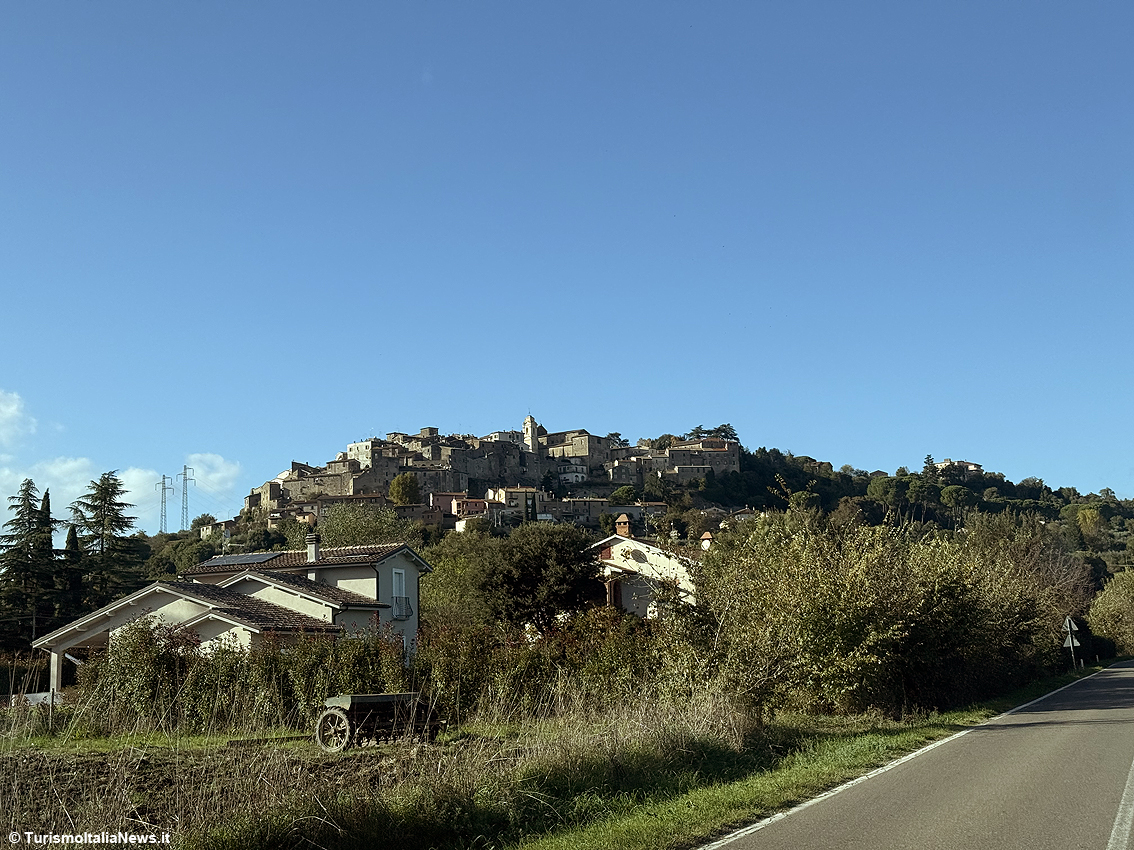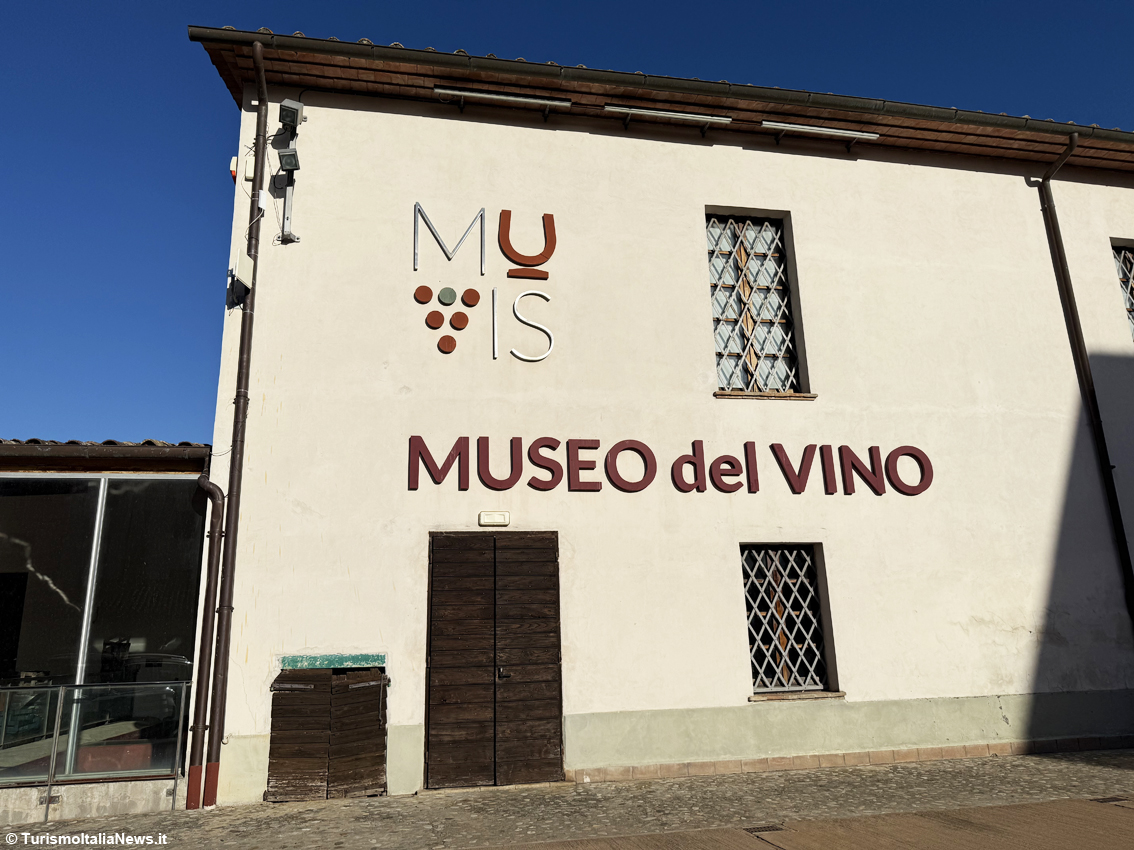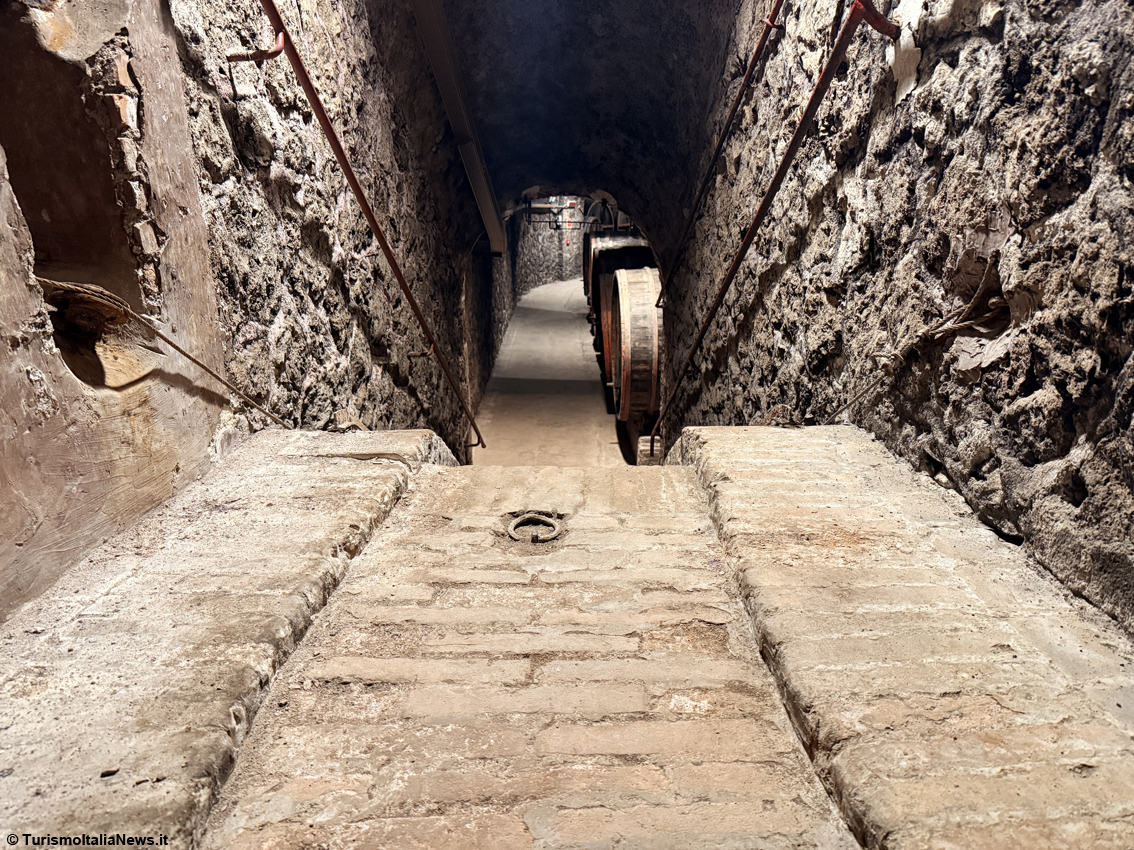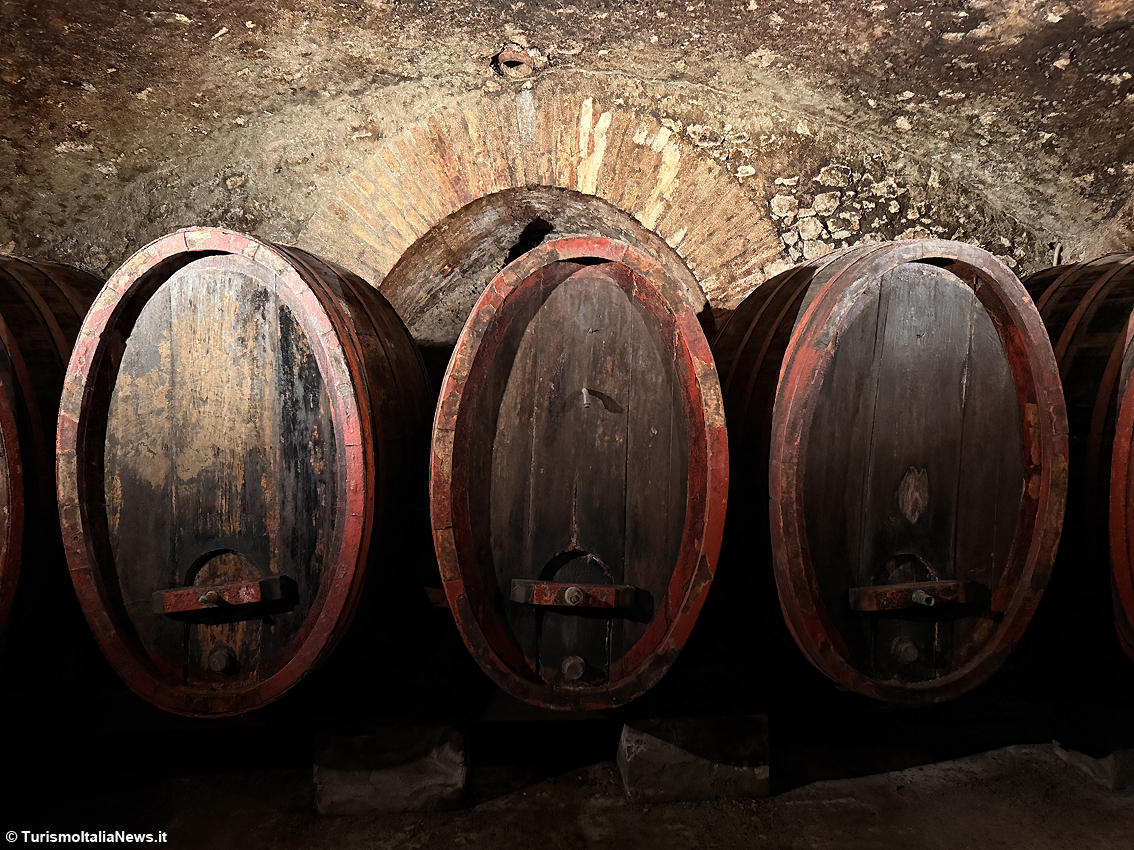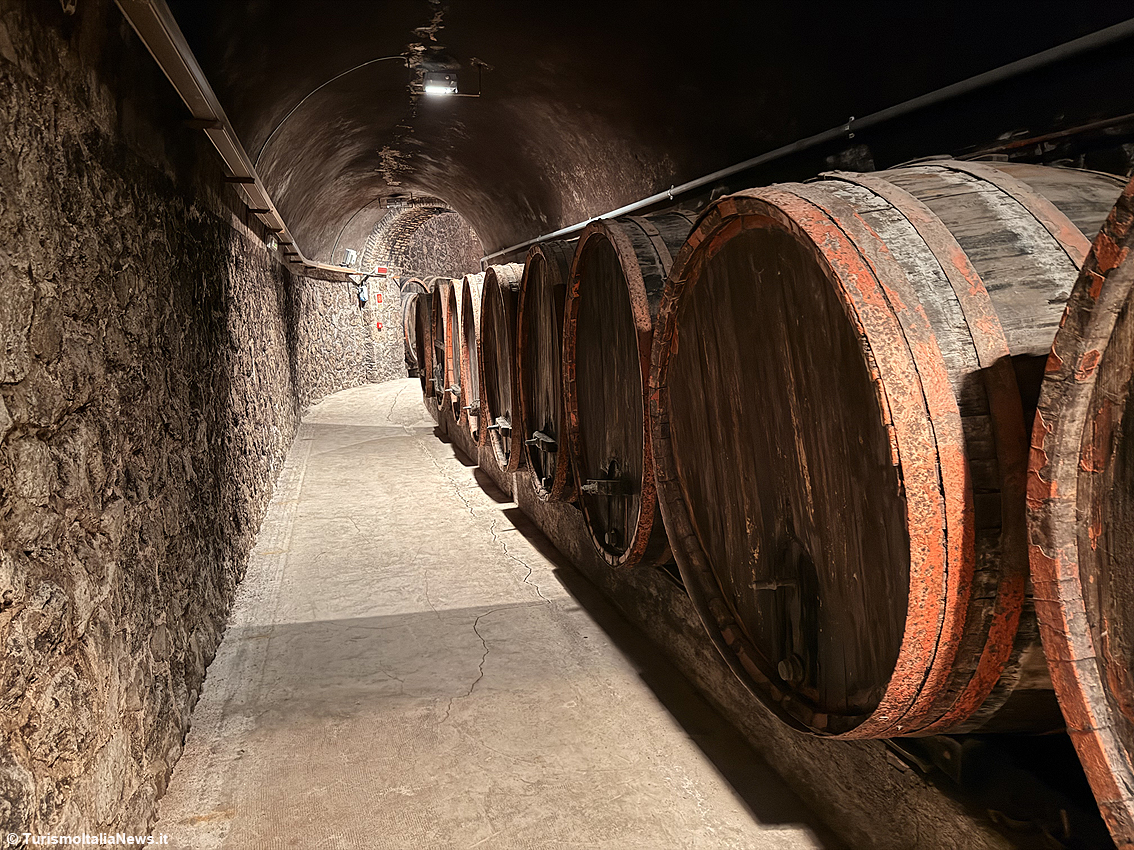ITALY | Beneath Castiglione in Teverina: a journey through Europe’s largest underground wine museum — welcome to Muvis

by Giovanni Bosi, Castiglione in Teverina / Lazio / Italy
In the heart of Castiglione in Teverina, a small village suspended between the Tiber River and Lake Bolsena, lies a place where a simple visit transforms into a full immersion in the history, culture, and soul of a community: the Muvis – Museum of Wine and Agricultural Sciences, the largest museum in Europe dedicated to wine. This monumental museum complex occupies the vast historic cellars of the Conti Vaselli, once the beating heart of Teverina’s winemaking tradition and today an extraordinary cultural landmark.
(TurismoItaliaNews) With the arrival of autumn, Muvis becomes even more vibrant: guided tours, concerts, theatre performances, and special events enrich an experience that is already evocative and full of wonder for both travellers and lovers of history and tradition.
A museum to explore, not just to visit
The numbers alone are impressive: 2,000 square meters of exhibition space, five floors—four of them underground—and an immersive itinerary extending over 3,000 square meters. It’s a descent into the hillside, a journey into the very core of Teverina’s agricultural history, reaching level -4 where visitors encounter “The Cathedral”, a monumental chamber housing Italy’s largest antique wine barrels, some with diameters exceeding three meters. In the soft light and silence of this immense space, surrounded by the scent of aged wood, one can almost hear the echo of decades of patience, care, and mastery devoted to winemaking.
The Vaselli Cellars: when a dream became an international enterprise
It’s impossible to speak of Muvis without mentioning Count Romolo Vaselli (1898–1967), the visionary entrepreneur who, in 1942, acquired the estate from Count Luigi Vannicelli Casoni and transformed it into one of the most dynamic wineries of Italy’s post-war era. From these cellars in Castiglione in Teverina, bottles of Orvieto Classico Doc Vaselli, Santa Giulia Sangiovese, sparkling wines and vermouths were shipped all over the world, symbolizing the growing prestige of Italian wine abroad. Vaselli not only brought fame to Teverina but also revolutionized its production methods. Within these same walls, the young Riccardo Cotarella, now one of Italy’s most renowned oenologists, took his very first steps in the world of wine.
An exhibition that tells stories with emotion
What makes Muvis truly unique is its power to engage and captivate. This is not a museum to observe from afar—it’s one to experience. The exhibition design, immersive and theatrical, combines authentic agricultural tools, vintage machinery, historical photographs, videos, and oral histories. Installations recreate the gestures and rhythms of rural life, transforming the visit into a multisensory journey through collective memory. Here, wine becomes the key to understanding history, culture, economy, and identity.
Wine as a reflection of human creativity
“Wine is a powerful creator of imagery,” explains the guide who leads visitors through the underground museum. Over the centuries, wine has inspired philosophers, doctors, poets, artists, and scientists alike. At Muvis, this creative universe is explored through a play of reflections, colours, and transparencies—symbols of how wine constantly reshapes itself and the imagination it evokes.
The eternal bond between wine and land
The story of wine mirrors that of humankind: it spans work, study, ritual, and creativity. From the careful choice of terrain and grape variety to the patient process of cultivation and harvest, every gesture follows a sacred order to ensure the perfect maturation of the fruit. Even with today’s technology and scientific knowledge, one truth remains unchanged: the deep power of wine to connect humanity to the land — a pact that marked the transition from nomadic to settled civilizations.
An immersive journey through themed halls
The visit begins with the story of the Vaselli Cellars, tracing the origins of local winemaking through documents, images, and testimonies. The Hall of Reflections and Transparencies explores wine’s shapes, colours, and artistic symbolism, while the Map Room offers an aerial overview of the Tiber Valley, comparing Teverina’s vineyards with regional and national wine-growing areas. Here, visitors can also admire the ancient concrete fermentation tanks, true relics of industrial archaeology. The Hall of Memory is perhaps the most evocative: visitors walk inside the original wine vats, cut open to create passageways illuminated by dim light and silence, as if entering the very memory of wine itself. The Shipping Room tells the story of export and innovation, displaying bottling equipment, laboratory tools, and original labels that capture the modern spirit of Vaselli’s enterprise.
Then comes the Historic Cellar, an intimate, atmospheric space where fine wines once aged in Bordeaux barrels and large wooden vats, behind an iron gate that safeguarded the most precious bottles. Finally, the experience culminates in The Cathedral: a curved tunnel that slowly descends into a vast, solemn chamber. Towering barrels—three and a half meters tall—line the space like silent guardians, evoking a sense of reverence and awe.
A museum with its gaze on the future
Muvis is not only a place of memory—it is also a living project for the cultural and economic revitalization of the Teverina area. Part of the regional network of ethnographic museums of Lazio and the National Association of Wine Cities, it serves as a cultural, touristic, and gastronomic hub along the Teverina Wine Route. For travellers eager to discover the deep ties between landscape, tradition, and winemaking, Muvis stands as a must-see destination—an underground world where the past breathes and the future of Italian wine culture continues to ferment.
Visiting Muvis: a journey worth adding to your itinerary
Autumn and winter are the perfect seasons to explore this remarkable site, enhanced by tastings, cultural events, performances, and special exhibitions that make every visit an unforgettable experience beneath the hills of Lazio.


